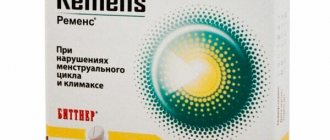Areas of application of formaldehyde
Formaldehyde is a toxic gas with a pungent odor. The advantage of the chemical is its ability to interact with a wide range of other substances: alcohol solutions, water and other types of solvents.
Due to its properties, formaldehyde is used in many areas:
- Woodworking . The chemical is used to make glue that joins layers of chipboard and fiberboard, and is also added to varnishes, paints and other finishing materials that enhance the attractiveness of wooden products.
- Food industry . Formaldehyde is used as a preservative and also as a disinfectant. It is widely used for smoking products, as well as for making goods from sugar beets.
- Cosmetology . Formaldehyde is added to shower gels, nail polishes, as well as shampoos and creams as a preservative, since it does not allow the development of pathogenic microorganisms in cosmetics. The chemical is also released during keratin straightening.
- Medicine. The most famous example of the use of formaldehyde is formaldehyde, which contains 40% of the chemical. Dentists, surgeons and other doctors use it to disinfect instruments and hands before performing medical procedures. Formalin is also used to reduce foot sweating and is used to embalm bodies.
- Pharmaceuticals . Formaldehyde is actively used in the manufacture of medicines, but in small concentrations and only together with other substances. In production, the chemical is used to create formaldehyde and Teymurov ointment for sweating feet, as well as lysoform, which is used for syringes.
Formaldehyde is added to cleaning products as a disinfectant and preservative.
Formaldehyde. Properties and Applications
Formaldehyde is the aldehyde of formic acid, the first member of the homologous series of aliphatic aldehydes.
The term formaldehyde comes from the Latin. formica - ant, in English. formaldehyde, German Formaldehyd, international name - metanal. Some synonyms - Formic aldehyde, Methaldehyde, Methyl aldehyde, Methylene oxide, Oxomethane, Oxymethylene An aqueous solution of formaldehyde is called formalin.
The formula of formaldehyde is very simple - CH2=O (or HCHO); Moreover, the formaldehyde molecule differs from the water molecule by the addition of only one carbon atom.
Formaldehyde is a gaseous, colorless substance with high chemical and biological activity, highly soluble in water and alcohols. Formaldehyde easily (sometimes spontaneously) polymerizes to form various solid forms of formaldehyde - (CH2=O)n: trioxane, tetraoxane, polyformaldehyde, paraformaldehyde, polyoxymethylene.
Formaldehyde is widely present in natural processes and can even be found in outer space. Scientists do not exclude its participation in the processes of the origin of life. Formaldehyde is specially produced industrially as a raw material for the production of various chemical products.
Formaldehyde emission sources
In industrial conditions, this chemical is obtained from methane and methanol, but it is also released under natural conditions, namely from:
- atmosphere;
- tobacco products;
- car exhaust gases;
- emissions from chemical and wood processing enterprises;
- waste incineration plants;
- combustion process;
- household items - windows and ceilings made of PVC, children's toys, household appliances, stationery, dishes, plywood and most pieces of furniture, especially the economy segment.
Benefit of connection
Despite the strong toxicity of formaldehyde, it can also be beneficial, especially in the pharmaceutical industry.
The gas does not bring obvious benefits in its pure form, but it can be useful as:
- preservative for cosmetics;
- disinfector for processing instruments;
- medicine for excessive sweating.
Negative effects of formaldehyde on humans
Formaldehyde is recognized as a partially carcinogenic substance, since there is no direct evidence of such an effect on human health. Based on the research results, a relationship was identified between the effect of the substance on the human body and the development of oncology.
However, other studies have not confirmed such an effect of the chemical, so the Ministry of Health has chosen an average position and does not recommend the use of such preservatives in food products or cosmetics.
If a person comes into contact with formaldehyde, the harm manifests itself immediately in the form of:
- skin rash;
- severe itching;
- irritation.
Long-term exposure to the chemical may cause:
- constant headaches;
- sleep disorders;
- prostration;
- depressed mood.
With severe manifestations, the eyes become inflamed and skin diseases appear, in some cases the risk of cancer increases.
When the level of formaldehyde rises too sharply, this condition causes swelling of the mucous membranes of the larynx, as well as the lungs - consequences that can lead to the death of the poisoned person.
If a person inhales formaldehyde, the gas burns the internal organs that participate in the respiratory process. Once on the skin, concentrated formaldehyde immediately leads to its necrosis, and the development of liver or kidney failure is also possible.
Obtaining formaldehyde
In industry, formaldehyde is produced by the oxidation of methanol (2CH3OH + O2 → 2HCHO + 2H2O) or methane (CH4 + O2 → HCHO + H2O). The processes are carried out at elevated pressure and temperature in the presence of various catalysts.
The bulk of commercial formaldehyde is supplied in the form of formalin - a water-methanol solution (35-37% formaldehyde, 6-11% methanol) or an aqueous solution (37% formaldehyde). In 2005, global formaldehyde production amounted to 21 million tons.
Formaldehyde (formalin) is produced at many domestic chemical plants, for example: Akron (Veliky Novgorod), Karbolit (Orekhovo-Zuevo, Moscow Region), Metafrax (Gubakha, Perm region), Uralkhimplast (Nizhny Tagil, Sverdlovsk region), Tomskneftekhim (Tomsk) , Novocherkassk Synthetic Products Plant (Rostov region), etc.
Who is most affected by the compound?
Formaldehyde (its effect on the human body is inevitable, since the substance is used in many industrial areas) is constantly present in housing and household items in small quantities. However, there are certain groups of people who are more susceptible to the effects of the toxin.
These include:
- industrial workers interacting with formaldehyde products;
- residents of areas located near factories producing methanol, formaldehyde, furniture, paints and varnishes, plastics;
- employees of furniture workshops;
- employees of paper manufacturing enterprises;
- representatives of electronic production, textile enterprises;
- medical employees employed in morgues and institutions conducting laboratory tests;
- workers of funeral establishments that provide embalming services.
Application
An aqueous solution of formaldehyde (methanediol) stabilized with methanol - formalin - causes denaturation of proteins, so it is used as a tanning agent in the tanning industry and tanning gelatin in the production of film. Due to its strong tanning effect, formaldehyde is also a strong antiseptic; this property of formaldehyde is used in medicine (Formidron, Formagel and similar preparations) and for the preservation of biological materials (creation of anatomical and other preparations).
An aqueous solution of formaldehyde (methanediol) stabilized with urea - KFK - is one of the most important sources of formaldehyde and urea in the production of urea-formaldehyde, melamine-urea-formaldehyde resins and for the treatment of urea against caking; used in the woodworking and furniture industries for the production of plywood, chipboard, etc.
The main part of formaldehyde is used in the production of thermoset polymers (phenol-formaldehyde, urea-formaldehyde and melamine-formaldehyde resins); it is also widely used in industrial organic synthesis (pentaerythritol, trimethylolpropane, etc.).
During storage (at temperatures below 9 ° C), the formaldehyde solution becomes cloudy and a white precipitate (paraformaldehyde) precipitates.
Registered in the food industry under code E240[3].
Inhalation of formaldehyde into the body
The inhalation method means that vapors of the substance penetrate through the respiratory tract. Most often, this method of exposure to formaldehyde is found in industries where employees deal with its gaseous state and do not have the necessary respiratory protection.
When formaldehyde is inhaled, the organs involved in the breathing process are immediately affected. The esophagus is burned first, and the vapors are also distributed throughout the lungs, and the bronchi are additionally affected. After some time, the chemical reaches the tissues of the bone marrow, intestinal mucosa and salivary glands, and the lymphoid tissue, as well as the pancreas, is affected. This is expressed in burning, weakness and nausea.
At high concentrations of formaldehyde, severe poisoning occurs, which has the following consequences:
- swelling of the larynx and lungs, which leads to suffocation;
- circulatory disorders;
- severe pain caused by a burn to the esophagus.
With chronic poisoning, that is, constant exposure to formaldehyde on a person, health gradually deteriorates. On the part of the respiratory organs, there is a constant runny nose, cough and suffocation, a person feels chronic fatigue, and subsequently swelling of the respiratory organs occurs.
Properties of formaldehyde
Under normal conditions, a colorless gas with a pungent, irritating odor.
Molar mass 30.03 g/mol Density 0.9151 g/cm³ (at −80 °C) Solubility in water up to 37% Melting point −92 °C Boiling point −19.2 °C Explosion category II B Explosion group T2 Concentration flammability limits 7-73% vol. Auto-ignition temperature 435 °C
Formaldehyde has strong antiseptic properties and is capable of destroying most microorganisms, including their spores. Toxic, negatively affects the respiratory tract, eyes, skin, genetic material, reproductive organs, and has a strong effect on the central nervous system.
The International Agency for Research on Cancer (IARC) of WHO classifies formaldehyde as a carcinogen, see report Vol.: 88 (2006) CAS No.: 50-00-0, link https://monographs.iarc.fr/ENG /Monographs/vol88/volume88.pdf . Formaldehyde causes allergies in some people.
In terms of toxicity, formaldehyde belongs to hazard class 2 (highly hazardous - similar to chlorine, dichloroethane, carbon disulfide, etc.) according to GOST 12.1.005 “General sanitary and hygienic requirements for the air of the working area”
For air in populated areas, the maximum permissible single concentration of formaldehyde is MPCm.r. = 0.035 mg/m³, maximum permissible average daily concentration of MPCs.s. = 0.003 mg/m³ (established by Hygienic Standards GN 2.1.6.1338-03 “Maximum Permissible Concentrations (MPC) of Pollutants in the Atmospheric Air of Populated Areas” (approved by the Chief State Sanitary Doctor of the Russian Federation on May 31, 2003)
The maximum permissible concentration of formaldehyde in the air of the working area is MPC = 0.5 (established by Hygienic Standards GN 2.2.5.1827-03 “Maximum Permissible Concentrations (MAC) of Harmful Substances in the Air of the Working Area”) The lethal dose of a 35% aqueous solution of formaldehyde (formalin) is 10 — 50 g.
In emergency situations, gas masks of grades A and M are used according to GOST 12.4.121. Technical forms of formaldehyde cause rapid corrosion of carbon steels and aluminum alloys.
Oral exposure to the substance
Accidental ingestion of formaldehyde can occur unknowingly because the chemical solution cannot be distinguished from standard water. The substance settles mainly in the stomach and larynx, but is distributed throughout the gastrointestinal tract.
Immediately after exposure to the substance, symptoms of poisoning can be noted such as:
- vomiting blood;
- severe diarrhea;
- a burning sensation in the nasopharynx, to which pain is added.
As with inhalation, oral administration can cause swelling of the larynx and respiratory arrest, which requires urgent medical attention. If qualified medical care is not provided, formaldehyde will put a strain on the kidneys, causing hemorrhagic nephritis.
12 hours after entering the gastrointestinal tract, formaldehyde reaches the bone marrow, where it has a destructive effect on it.
Skin contact with formaldehyde
Formaldehyde (the effect on the human body is determined by the symptoms of poisoning) can get on the skin if someone works with the substance without protective equipment or accidentally touches a concentrated chemical.
When the skin and formaldehyde interact, a chemical burn occurs, and signs of dermatitis appear, which, if left untreated, turn into eczema, which complicates treatment.
Other consequences of contact with chemicals are no less serious:
- Strong headache;
- pronounced weakness;
- itching;
- hives;
- nail diseases.
Pharmacodynamics and pharmacokinetics
What is Formaldehyde and how does it affect the body? This chemical compound inhibits the secretion of sweat glands, disinfects, and inhibits the activity of pathogenic bacteria. The drug oactvino is used against gram-positive and gram-negative bacteria , molds and yeast-like fungi .
When used topically, the substance does not penetrate into the blood and does not have a systemic effect on the body.
How does formaldehyde affect reproductive function?
Male reproductive function is constantly restored, and, despite the harmful effects of formaldehyde on sperm, the effects of poisoning disappear already three months after treatment. The effect of the chemical on women's health is much more serious, and in those women who work with the chemical or are exposed to it.
The following reproductive system disorders may occur:
- the menstrual cycle is disrupted;
- miscarriage may occur during pregnancy;
- algomenorrhea develops;
- diseases associated with the cervix appear;
- hypermenstrual syndrome is observed.
All these diseases are just symptoms indicating the penetration of formaldehyde or its derivatives into the body. If a woman could actually come into contact with a chemical, she needs to urgently contact a doctor.
What concentration of formaldehyde is considered non-hazardous?
This chemical is gaseous, which means that the main thing is its concentration in the air. The acceptable value is 0.001 mg/liter. In work areas the norm increases, but cannot be higher than 0.005 mg/liter of air.
Formaldehyde has a negative effect on the body; when poisoned, it causes headaches and other obvious symptoms.
If such indicators are present, no irreparable harm is caused to a person’s health, but over time he may experience mild symptoms of poisoning. The possibility of cancer also increases.
Emission classes for chipboard production
The main source of formaldehyde in residential and office premises is furniture and building materials, so it has become important to study its release (emission) from them. During the first year and a half from the moment the sofa or laminate is manufactured, the most intense emission occurs, leading to an increase in the formaldehyde content in the air of the apartment. Then it decreases, but in damp and poorly ventilated areas, the process of releasing toxins will continue for many years.
In accordance with international requirements, chipboard manufacturers assign emission classes to their products, indicating the level of free formaldehyde content in 100 g of absolutely dry matter. Class markings and their characteristics are as follows:
- E-0 completely eliminates the content of formaldehyde, indicating the environmental friendliness of the product. MDF and laminate are safe even with a significant increase in temperature and humidity in the room.
- E-0.5 indicates that the formaldehyde content in dry material is up to 5 mg per 100 g of weight. This quality meets the requirements for export products and foreign orders (for example, the Swedish concern IKEA) placed in Russian factories.
- E-1 states that the formaldehyde content ranges from 5 to 10 mg inclusive for every 100 g of weight. Such boards can be used to make children's furniture.
- E-2 indicates a content of 10 to 30 mg of substance per 100 g of material. The production of boards with large amounts of formaldehyde is prohibited.
Symptoms of chronic and acute poisoning
The influence of formaldehyde on the human body, whether it was constant or the concentration became critical immediately, leads to the appearance of various symptoms.
Doctors divide poisoning from this substance into two categories: chronic and acute, the first is associated with long-term exposure to the chemical, while the second is associated with inhalation, ingestion or contact with a large dose of the substance.
| Poisoning | Symptoms |
| Chronic | Severe headache, pale skin and mucous membranes, constant weakness and loss of ability to work, weight loss, mood changes, regardless of the situation, sleep disturbances, the appearance of bronchial asthma, shortness of breath. |
| Acute | Dizziness, convulsions, severe vomiting of blood, diarrhea, burning in the oropharynx and stomach, swelling of the larynx and lungs, suffocation, loss of coordination of movements. |
Instructions for use (Method and dosage)
Formaldehyde solution is used exclusively externally.
The substance is applied to dry areas with increased sweating after a shower. The surface must be treated carefully, using a minimal amount of the substance. Apply the product to the soles and interdigital areas for 30-40 minutes, and to sensitive skin of the palms and armpits for 20 minutes.
The medicine should not be used within 24 hours after shaving. One procedure reduces skin sweating for 7-12 days. If this is not enough, then the procedure is repeated for several days in a row.
First aid for poisoning
If a person experiences signs of formaldehyde poisoning, it is necessary:
- Call an ambulance.
- Find out how the poisoning occurred.
- Provide symptomatic treatment.
Before the doctor arrives, you must complete the following steps:
- remove or remove the victim from the premises and distance him as far as possible from the source of injury;
- try to remove the poison by inducing vomiting or gastric lavage.
If a person loses consciousness, it is necessary to wait for a doctor who uses a gastric tube to rinse. Before this, the patient should lie on his left side. Doctors neutralize formaldehyde as first aid by introducing ammonia through the mouth or probe; ammonium carbonate is also used for rinsing.
Activated carbon helps well at the rate of 1 g/kg of a person’s weight, which is dissolved in 400 ml of water.
Subsequently, the coal is removed from the stomach by vomiting. If the solution gets on your skin or eyes, you should immediately rinse the affected area with purified water or use a 5% ammonia solution (not used for treating eyes).
Receipt
The main industrial method for producing formaldehyde is the oxidation of methanol:
The oxidation of methanol to formaldehyde is carried out using a silver catalyst at a temperature of 650 °C and atmospheric pressure. This is a well-developed technological process, and 80% of formaldehyde is obtained using this method. Recently, a more promising method based on the use of iron-molybdenum catalysts has been developed. In this case, the reaction is carried out at 300 °C. In both processes the conversion rate is 99%[2].
The process of methanol dehydrogenation, carried out on zinc-copper catalysts at 600 °C, has not yet been widely developed, but it is very promising because it allows one to obtain water-free formaldehyde.
There is also an industrial method for producing formaldehyde by oxidizing methane:
The process is carried out at a temperature of 450 °C and a pressure of 1-2 MPa; aluminum phosphate AlPO4 is used as a catalyst.
Treatment for formaldehyde poisoning
A person poisoned by formaldehyde is prescribed treatment in a hospital intensive care unit, where a whole range of measures are involved.
The complex is like this:
- Hemodialysis - blood is passed through an artificial kidney machine, thus being purified, and then returned to the body.
- Accelerated diuresis - a lot of isotonic solution, or up to 2 liters of glucose, is injected into the vein, and a diuretic is also injected immediately.
- Symptomatic treatment - doctors monitor the functioning of the heart and nervous system, and in case of disturbances, prescribe the necessary medications.
- Supporting liver function - vitamins and hepatoprotectors are introduced into the body, which eliminate the inability of the affected organ.
How to use Formalin
To wash the skin, use a 0.5-2% Formalin solution. To wash the soles of the feet, use a 3-5% solution.
Daily use of the drug is not recommended, as it can cause skin irritation.
If irritation occurs, it is recommended to stop using Formalin and sprinkle the inflamed areas of the skin with talcum powder.
The optimal use of the solution is no more than once or twice a week.
The properties of Formalin are used to treat mycoses and fungal diseases of the feet. The solution is used to disinfect shoes and insoles. For this purpose, the insoles and the inner surface of the shoes are wiped with a 25% solution, after which the shoes must be aired for several hours until the pungent odor disappears.
Restoring the body after intoxication
After the poisoning has been cured and the body has returned to normal, a comprehensive examination is usually prescribed to identify irreversible changes or deterioration in the person’s condition.
To reduce harm and restore the body, the patient is prescribed:
- drinking plenty of water;
- abolition of fried and salty foods;
- regular ventilation of the living space.
If there are changes in the functioning of internal organs caused by formaldehyde, medications for the liver, heart, kidneys and lungs may be prescribed. The chemical has an individual effect on the human body, therefore rehabilitation measures after poisoning are selected separately for each patient.
Author of the article: Ekaterina Gordeychuk
Article design: Oleg Lozinsky
How to protect yourself from harmful chemicals
Unfortunately, no preventive measure can guarantee 100% cleanliness of indoor air. However, following simple safety rules will minimize the likelihood that you are breathing a mixture of chemicals rather than clean air:
- Choose building and finishing materials carefully and buy them in stores, not in markets.
- If possible, give preference to products made from solid wood or metal. When purchasing pressed wood materials, you should choose laminated products or those with veneered ends.
- Ask sellers for documents that are a mandatory requirement of technical regulations on the safety of building materials: a certificate or declaration of conformity with the registered manufacturer and place of production;
- quality passport;
- technical documents on safe use.
In addition to chemical air pollution, radiation, electromagnetic radiation, bacterial pollutants, allergens, dust mites and a number of other environmental factors can have a negative impact on the health and worsen the well-being of people, therefore it is recommended to conduct a comprehensive environmental assessment of residential premises, which, unfortunately, will not be cheap .
Author:
Sabuk Tatyana Leonidovna hygienist, epidemiologist










